For employees to succeed and evolve in their careers, organizations need to provide:
- The right resources and skills
- Alignment between managers and the business on goals and expectations
- The right channels for inputs and feedback
- Support for mental and physical well-being
This requires having a continuous listening strategy throughout the employment lifecycle. Organizations that use continuous listening are making a key investment in improving the employee experience and productivity by providing open channels that help increase satisfaction in the workplace. These companies stand to see payoffs in the form of stronger recruitment, retention, engagement, and results.
Where’s the ‘but’?
Implementing continuous learning with unstructured data is challenging
Much of the world’s data, including real-time data, is unstructured. An ability to analyze and act on this unstructured data presents a huge opportunity that can create competitive advantage.
According to a survey from Deloitte, only 18% of organizations analyze and take advantage of unstructured data, which includes things like unstructured text in open-ended survey responses, performance review documents, emails, interviews, questionnaires, and more. And IDC analysts estimate that 90% of unstructured data in organizations is unstructured and most is never used, leaving an untold amount of value untapped.
Unlike structured data, unstructured data doesn’t adhere to a predefined schema or conventional data model, which makes it more challenging to analyze or interpret. However, unstructured data contains a wealth of intelligence that can help any organization make data-driven decisions shaped by the voices of its employees.
So, where does Continuous Workforce Learning come in?
Introducing Continuous Workforce Learning based on self-service, machine learning (ML) models.
Continuous Workforce Learning within Oracle Fusion HCM Analytics is an AI-powered engine that uses OCI’s Natural Language Processing to reveal the structure and meaning of open-ended survey responses. With Continuous Workforce Learning, organizations can perform sophisticated text analytics at scale at the click of a button. Using pretrained models, anyone can process and analyze unstructured survey text, extract sentiment, detect language, classify text and extract key phrases without data science expertise.
Using Oracle Fusion Analytics’ extensible architecture, an organization can bring in data from any survey tool, product, or warehouse, easily including employee feedback data such as appraisals, one-on-one meetings, and polls, then combine it with workforce data to generate insights that help answer business questions and improve employee experience and engagement.
Continuous Workforce Learning is crucial for people leaders
In today’s dynamic environment, the imperative is continuous monitoring so you can be proactive and get to root causes as quickly as possible. Merely looking at raw numbers doesn’t uncover the true reason or the root causes of issues. Furthermore, most metrics are lagging indicators. Continuous Workforce Learning offers new ways to be agile, including some key benefits:
- Improve employee satisfaction: uncover real time and hidden engagement drivers to make more effective decisions about engaging and motivating employees.
- Lead effectively: provide people managers with the analytics they need to lead their teams effectively, even when they’re not in the same room to help create more effective people strategies and interventions.
- Foster meaningful feedback: proactively identify issues before they become major problems, allowing people leaders to build stronger relationships with their team and more effectively lead their organization.
- Measure engagement: check on the team’s well-being, understand how they’re feeling, and provide them with the support they need.
- Create a stronger connection with employees: pay attention to any data points around intrinsic needs and motivators across employees and identify areas of growth and improvement to build stronger relationships.
- Predict unexpected churn: forecast turnover rates to help reduce risk of unexpected workforce changes.
Here’s an example of Continuous Workforce Learning in action: employees of an organization were asked “what changes would you like to see at work?” Here are the results:
Employee Sentiment (positive, neutral, or negative, with scores)
You can see that pre- and post-Covid (November 2020 to March 2022), employees were engaging, and the negative sentiment overweighed the positive sentiment. During the peak of Covid wave, the number of responses dipped, indicating employees wanted to preserve the status quo.
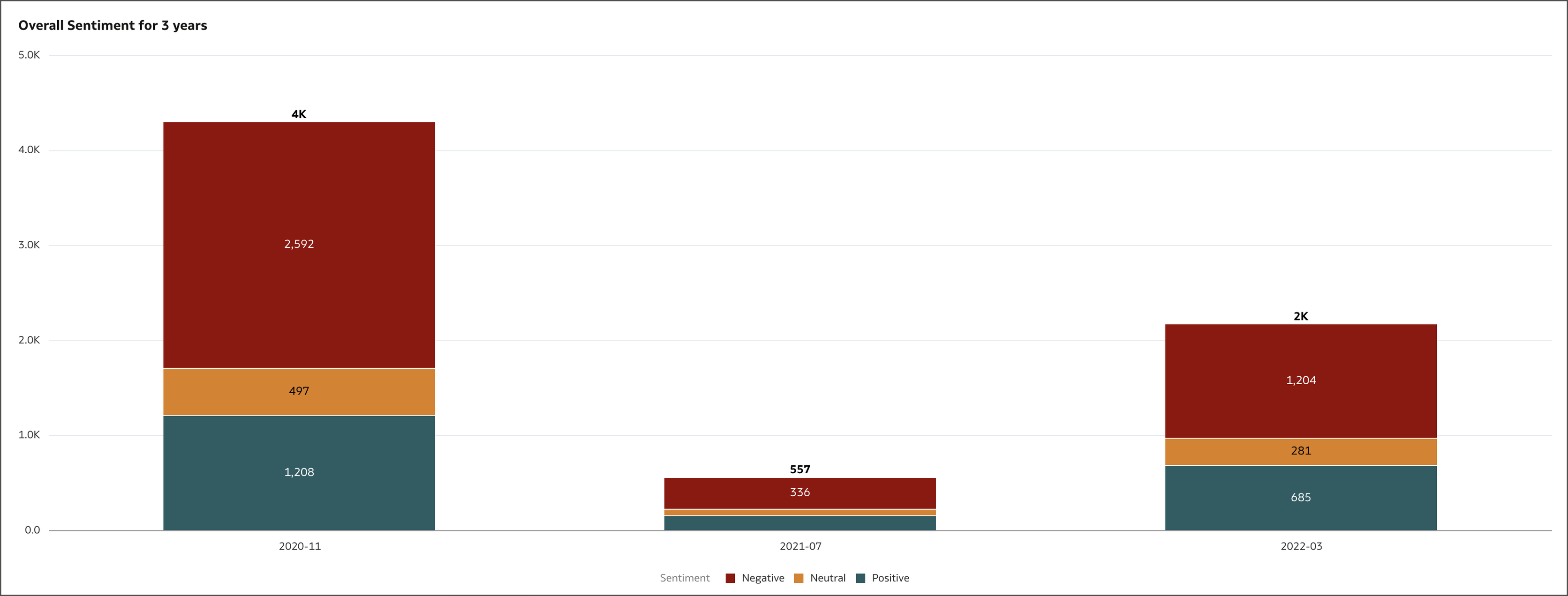
When you drill down by country, you see that the United States has slightly more negative sentiment than positive.
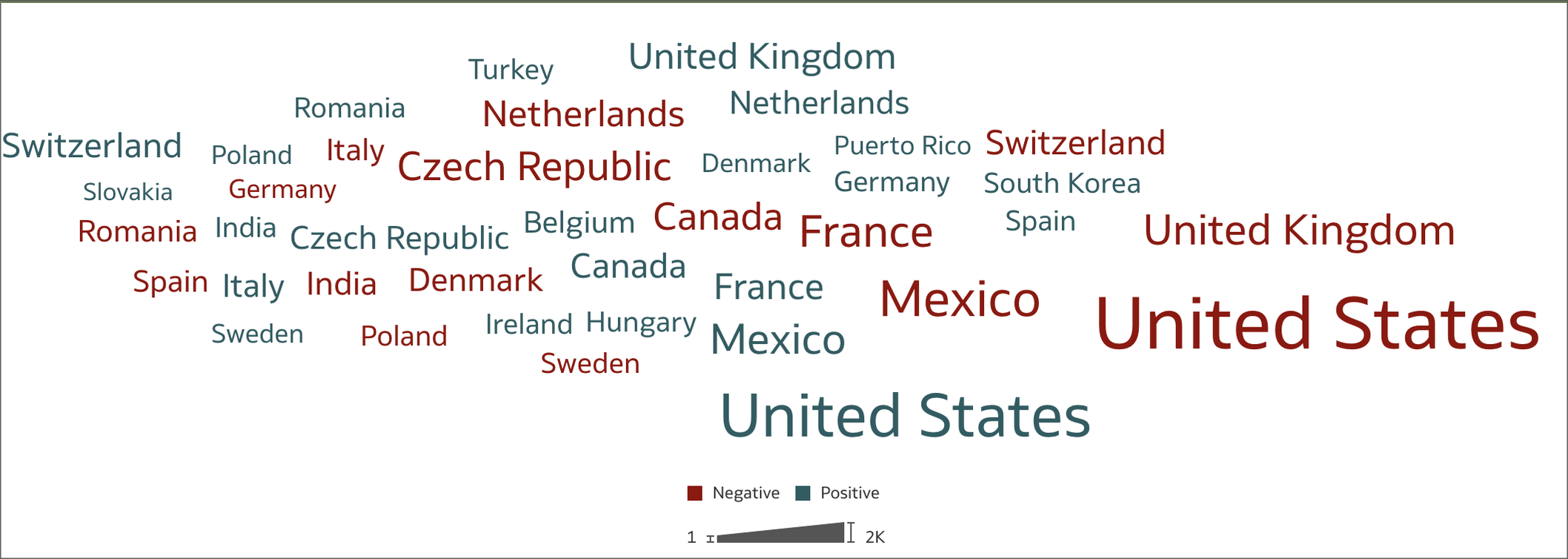
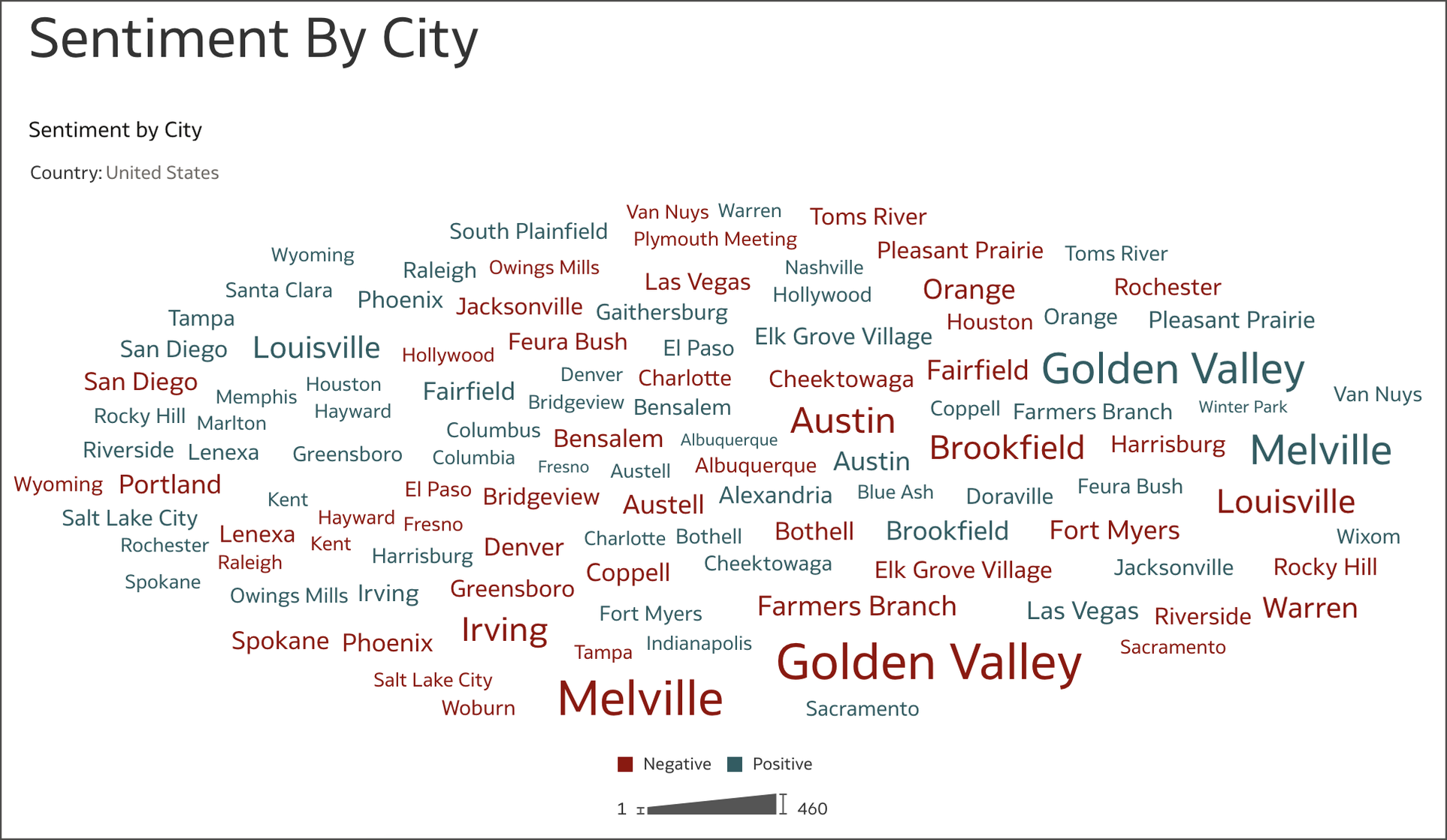
When you further drill down by job function, you can clearly see that Sales and Engineering colleagues are the lead indicators of negative sentiment.
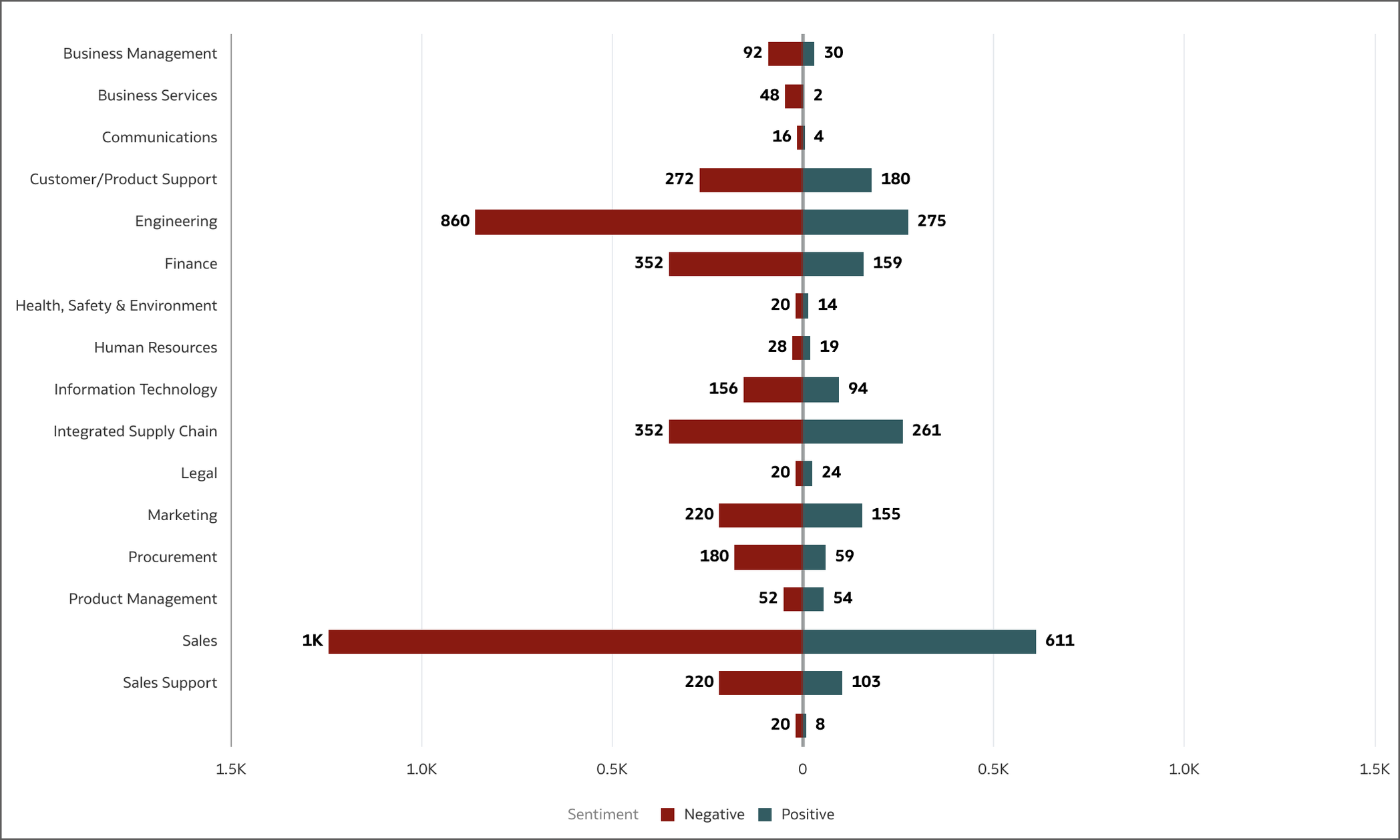
Business (sentiment analysis for specific words)
It’s easy to extend the sentiment analysis to broader business aspects as well. Under this category, you can see a lot of positivity across people, company, team, manager, and customers, indicating that the health of the organization isn’t at risk.
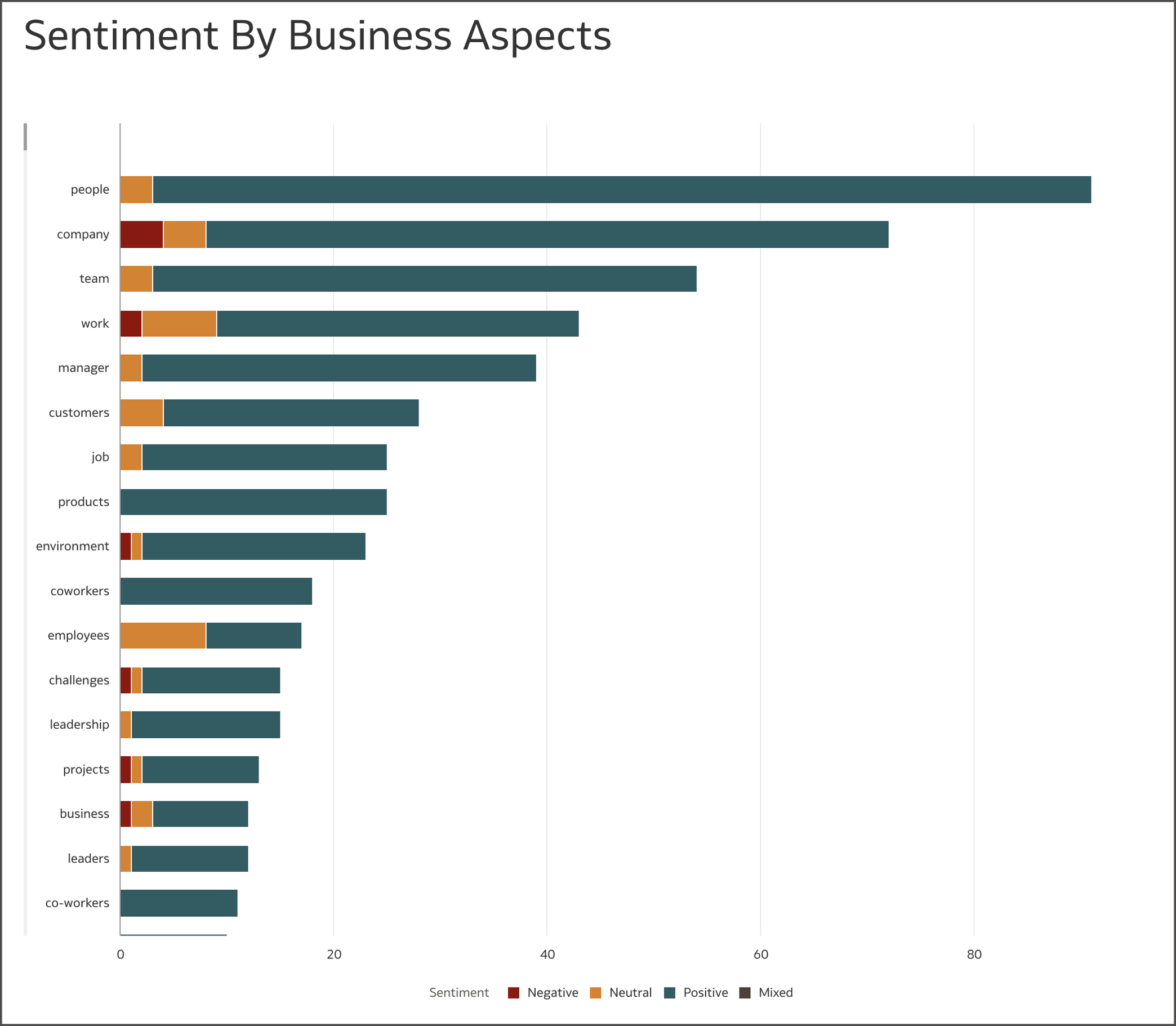
Be analytics-driven with Fusion HCM Analytics
While employee feedback and social channels continue to be important in understanding employee engagement, they aren’t a full listening strategy. To know the general health of the workforce, feedback needs to be examined along with other relevant workforce data such as performance, compensation, and more. It is essential for people leaders to implement a continuous listening strategy with an integrated analytics solution so they can understand how the workforce is performing, predict trends, and correlate the insights gleaned from the continuous listening with other key HR KPIs and metrics. More importantly, any resolutions and corrective actions need to be tied to workforce metrics for effective tracking.
Fusion HCM Analytics allows you to quickly track pre-built KPIs and metrics, dashboards, and reports using Oracle Fusion Cloud HCM data. With a single extensible cross-departmental data model, you can see business performance across departments using prebuilt KPIs in a unified dashboard view at any given point in time. By providing a comprehensive view of all the feedback data along with workforce data, Fusion HCM Analytics can aid decision-making and link insights with tangible business outcomes.
Watch Continuous Workforce Learning demo video on YouTube.
Learn more about Oracle Fusion HCM Analytics.
Follow us on Twitter@OracleAnalytics, and connect with us on LinkedIn.

